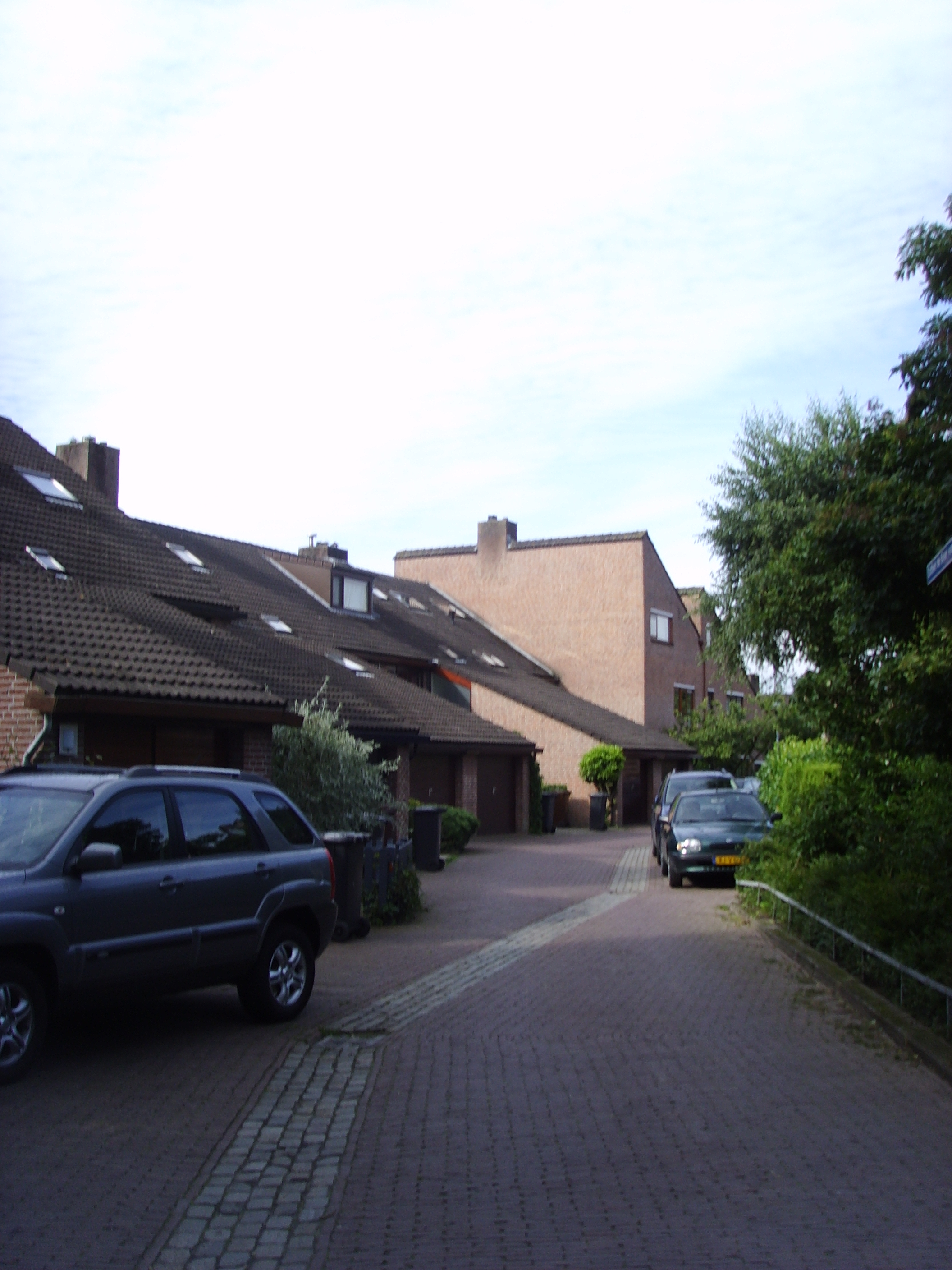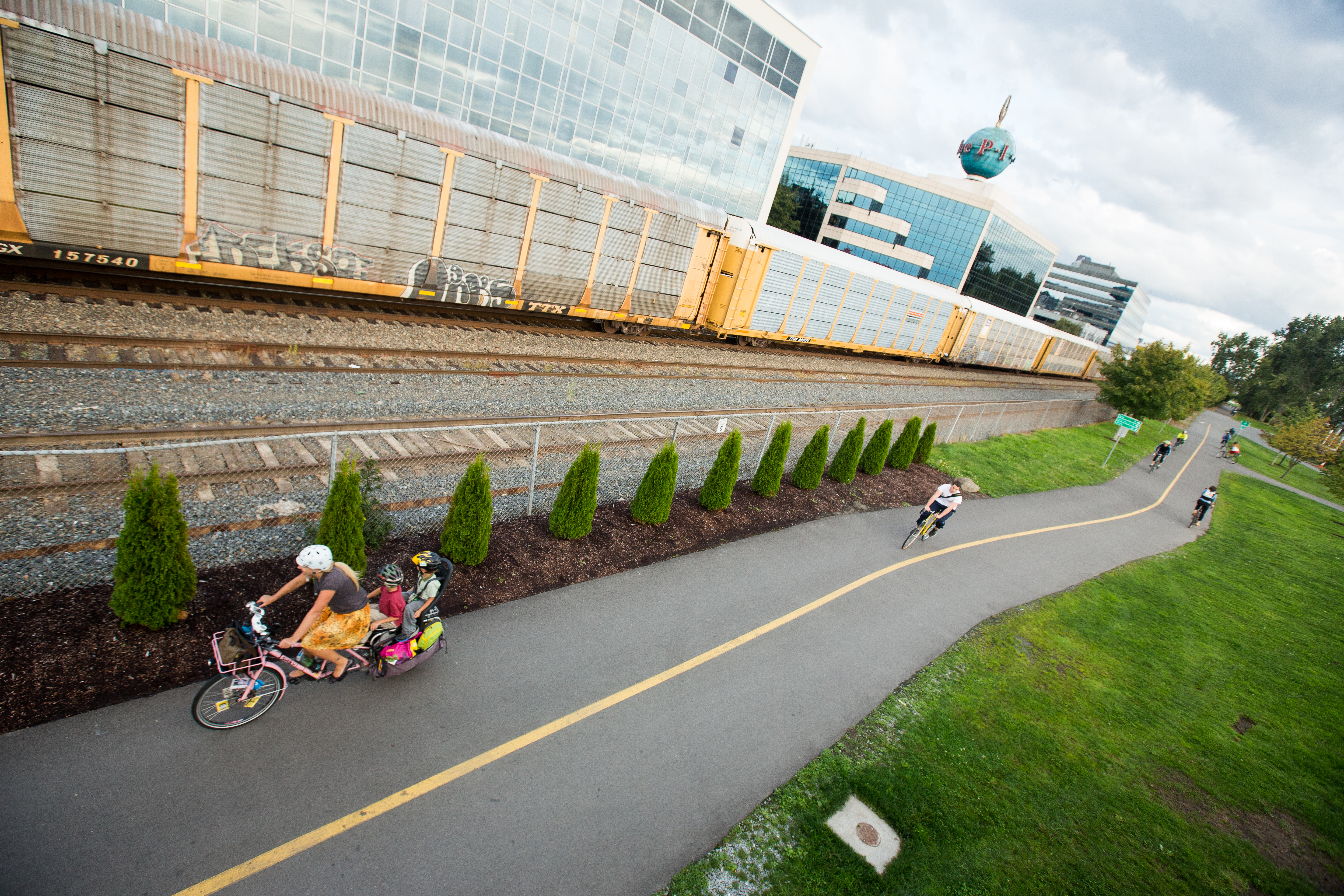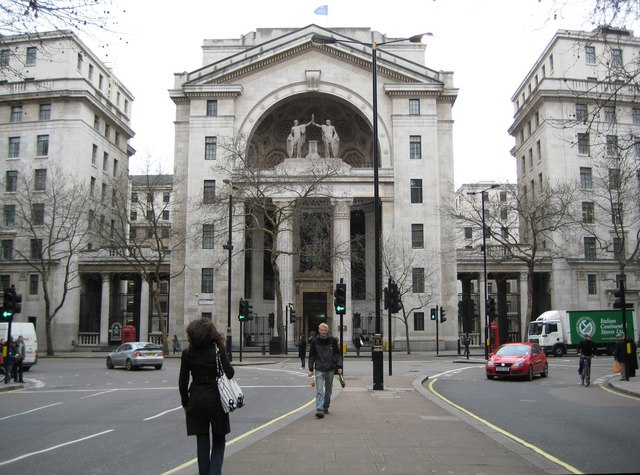|
Cycling In The Netherlands
Cycling is a common mode of transport in the Netherlands, with 36% of Dutch people listing the bicycle as their most frequent way of getting around on a typical day, as opposed to the car (45%) and public transport (11%). Cycling has a modal share of 27% of all trips (urban and rural) nationwide. In cities this is even higher, such as Cycling in Amsterdam, Amsterdam which has 38%, and Zwolle 46%. This high frequency of bicycle travel is enabled by excellent cycling infrastructure such as cycle paths, cycle tracks, protected intersections, ample bicycle parking and by making cycling routes shorter and more direct (and therefore usually quicker) than car routes. In the countryside, a growing number of routes connect the Netherlands' villages, towns and cities: some of these paths are part of the Dutch National Cycle Routes, Dutch National Cycle Network, a network of routes for Bicycle touring, bicycle tourism which reaches all corners of the nation. History Cycling became popula ... [...More Info...] [...Related Items...] OR: [Wikipedia] [Google] [Baidu] |
Maartje Van Putten
Maria Jeanette Anna (Maartje) van Putten (born 5 July 1951, in Bussum) is a Dutch politician. In her early 20s she was instrumental in shifting Dutch transport policy towards safer streets, with the lasting effect that the Netherlands has excellent cycle infrastructure. She was a Member of the European Parliament (MEP) for the Dutch Labour Party (PvdA) between 1989 and 1999, in which she was committed to the protection of nature and environment in developing countries. Parlementair Documentatie Centrum She later served as a member of the and wrote her |
Bicycle Touring
Bicycle touring is the taking of self-contained cycling trips for pleasure, adventure or autonomy rather than sport, commuting or exercise. Bicycle touring can range from single-day trips to extended travels spanning weeks or months. Tours may be planned by the participant or organized by a tourism business, local club or organization, or a charity as a fund-raising venture. Origins Historian James McGurn speaks of bets being taken in London in the 19th century for riders of hobby-horses – machines pushed by the feet rather than pedaled – outspeeding stagecoaches. "One practitioner beat a four-horse coach to Brighton by half an hour," he says. McGurn, James (1987), On Your Bicycle, John Murray, UK "There are various accounts of 15 to 17-year-olds ''draisienne''-touring around France in the 1820s. On 17 February 1869 John Mayall, Charles Spencer and Rowley Turner rode from Trafalgar Square, London, to Brighton in 15 hours for 53 miles. ''The Times'', which had sent a rep ... [...More Info...] [...Related Items...] OR: [Wikipedia] [Google] [Baidu] |
Woonerf
A woonerf () is a living street, as originally implemented in the Netherlands and in Flanders (Belgium). Techniques include shared space, traffic calming, and low speed limits. The term "woonerf" has been adopted directly by some English-language publications. In the UK, these areas are called home zones. Etymology The word, of Dutch origin, literally translates as "living yard" or "residential grounds". History Since the invention of automobiles, cities have been predominantly constructed to accommodate the use of automobiles. The entire locality of Emmen in the Netherlands was designed as a woonerf in the 1970s. In 1999 the Netherlands had over 6000 ''woonerven'' and today around 2 million Dutch people are living in ''woonerven''. The benefits of the woonerf are promoted by ''woonERFgoed'', a network of professionals and residents. In 2006 it was reported that people in Hesselterbrink, a neighborhood of Emmen, were disillusioned about how the woonerf principle had become ... [...More Info...] [...Related Items...] OR: [Wikipedia] [Google] [Baidu] |
Urban Planning
Urban planning, also known as town planning, city planning, regional planning, or rural planning, is a technical and political process that is focused on the development and design of land use and the built environment, including air, water, and the infrastructure passing into and out of urban areas, such as transportation, communications, and distribution networks and their accessibility. Traditionally, urban planning followed a top-down approach in master planning the physical layout of human settlements. The primary concern was the public welfare, which included considerations of efficiency, sanitation, protection and use of the environment, as well as effects of the master plans on the social and economic activities. Over time, urban planning has adopted a focus on the social and environmental bottom-lines that focus on planning as a tool to improve the health and well-being of people while maintaining sustainability standards. Sustainable development was added as one of th ... [...More Info...] [...Related Items...] OR: [Wikipedia] [Google] [Baidu] |
Bike Path
A bike path is a bikeway separated from motorized traffic and dedicated to cycling or shared with pedestrians or other non-motorized users. In the US a bike path sometimes encompasses ''shared use paths'', "multi-use path", or "Class III bikeway" is a paved path that has been designated for use by cyclists outside the right of way of a public road. It may or may not have a center divider or stripe to prevent head-on collisions. In the UK, a ''shared-use footway'' or ''multi-use path'' is for use by both cyclists and pedestrians. Bike paths with independent rights-of-way Bike paths that follow independent rights-of-way are often used to promote recreational cycling. In Northern European countries, cycling tourism represents a significant proportion of overall tourist activity. Extensive interurban bike path networks can be found in countries such as Denmark or the Netherlands, which has had a national system of cycle routes since 1993. These networks may use routes dedicated exc ... [...More Info...] [...Related Items...] OR: [Wikipedia] [Google] [Baidu] |
Bicycle Friendly
Bicycle-friendly policies and practices help some people feel more comfortable about traveling by bicycle with other traffic. The level of bicycle-friendliness of an environment can be influenced by many factors including town planning and cycling infrastructure decisions. A stigma towards people who ride bicycles and fear of cycling is a social construct that needs to be fully understood when promoting a bicycle friendly culture. Urban planning Assuming people prefer to get to their destination quickly, urban planning and zoning may affect whether schools, shops, public transport interchanges and other destination are within a reasonable cycling distance of the areas where people live. If urban form influences these issues, then compact and circular settlement patterns as in Elizabeth, NJ may promote cycling. Alternatively, the low-density, non-circular (i.e., linear) settlement patterns characteristic of urban sprawl as in nearby downtown Newark tends to discourage cycling. ... [...More Info...] [...Related Items...] OR: [Wikipedia] [Google] [Baidu] |
Rotterdam Fietspad Westzeedijk
Rotterdam ( , , , lit. ''The Dam on the River Rotte'') is the second largest city and municipality in the Netherlands. It is in the province of South Holland, part of the North Sea mouth of the Rhine–Meuse–Scheldt delta, via the ''"New Meuse"'' inland shipping channel, dug to connect to the Meuse first, but now to the Rhine instead. Rotterdam's history goes back to 1270, when a dam was constructed in the Rotte. In 1340, Rotterdam was granted city rights by William IV, Count of Holland. The Rotterdam–The Hague metropolitan area, with a population of approximately 2.7 million, is the 10th-largest in the European Union and the most populous in the country. A major logistic and economic centre, Rotterdam is Europe's largest seaport. In 2020, it had a population of 651,446 and is home to over 180 nationalities. Rotterdam is known for its university, riverside setting, lively cultural life, maritime heritage and modern architecture. The near-complete destruction ... [...More Info...] [...Related Items...] OR: [Wikipedia] [Google] [Baidu] |
CROW Design Manual For Bicycle Traffic
''CROW Design Manual for Bicycle Traffic'' is a publication on bicycle transportation planning and engineering in the Netherlands. It is published by CROW, a non profit agency advising Directorate-General for Public Works and Water Management formerly Ministry of Transport and Water Management (Netherlands). It is the most influential bicycle traffic planning manual, both worldwide and on cycling in the Netherlands. It was last updated in 2016. It is considered best practice. History First published in the 1970s, it was most recently revised and published including in English, in 2016. See also *Bikeway controversies *Bikeway safety There is debate over the safety implications of cycling infrastructure (e.g. cycle tracks, protected intersections). Recent studies generally affirm that segregated cycle tracks have a better safety record between intersections than cycling on maj ... * National Association of City Transportation Officials#Urban Bikeway Design Guide References Ex ... [...More Info...] [...Related Items...] OR: [Wikipedia] [Google] [Baidu] |
1973 Oil Crisis
The 1973 oil crisis or first oil crisis began in October 1973 when the members of the Organization of Arab Petroleum Exporting Countries (OAPEC), led by Saudi Arabia, proclaimed an oil embargo. The embargo was targeted at nations that had supported Israel during the Yom Kippur War. The initial nations targeted were Canada, Japan, the Netherlands, the United Kingdom and the United States, though the embargo also later extended to Portugal, Rhodesia and South Africa. By the end of the embargo in March 1974, the price of oil had risen nearly 300%, from US to nearly globally; US prices were significantly higher. The embargo caused an oil crisis, or "shock", with many short- and long-term effects on global politics and the global economy. It was later called the "first oil shock", followed by the 1979 oil crisis, termed the "second oil shock". Background Arab-Israeli conflict Ever since the recreation of the State of Israel in 1948 there has been Arab–Israeli conflict in the ... [...More Info...] [...Related Items...] OR: [Wikipedia] [Google] [Baidu] |
BBC World Service
The BBC World Service is an international broadcasting, international broadcaster owned and operated by the BBC, with funding from the Government of the United Kingdom, British Government through the Foreign Secretary, Foreign Secretary's office. It is the world's largest external broadcaster in terms of reception area, language selection and audience reach. It broadcasts radio news, speech and discussions in more than 40 languages to many parts of the world on Analogue signal, analogue and Shortwave listening, digital shortwave platforms, internet streaming, podcasting, Satellite radio, satellite, Digital Audio Broadcasting, DAB, FM broadcasting, FM and Medium wave, MW relays. In 2015, the World Service reached an average of 210 million people a week (via TV, radio and online). In November 2016, the BBC announced that it would start broadcasting in additional languages including Amharic and Igbo language, Igbo, in its biggest expansion since the 1940s. "BBC World Servic ... [...More Info...] [...Related Items...] OR: [Wikipedia] [Google] [Baidu] |
Effects Of The Car On Societies
Since the start of the twentieth century, the role of cars has become highly important, though controversial. They are used throughout the world and have become the most popular mode of transport in many of the more developed country, developed countries. In developing country, developing countries, the effects of the car on society are not as visible, however they are nonetheless significant. The development of the car built upon the transport sector first started by railways. This has introduced sweeping changes in employment patterns, social interactions, infrastructure and the distribution of goods. Despite the positive effects on access to remote places and mobility, comfort provided by the automobile, allowing people to geographically increase their social and economic interactions, the negative effects of the car on everyday life are not negligible. Although the introduction of the mass production, mass-produced car represented a revolution in industry and convenience, cr ... [...More Info...] [...Related Items...] OR: [Wikipedia] [Google] [Baidu] |









